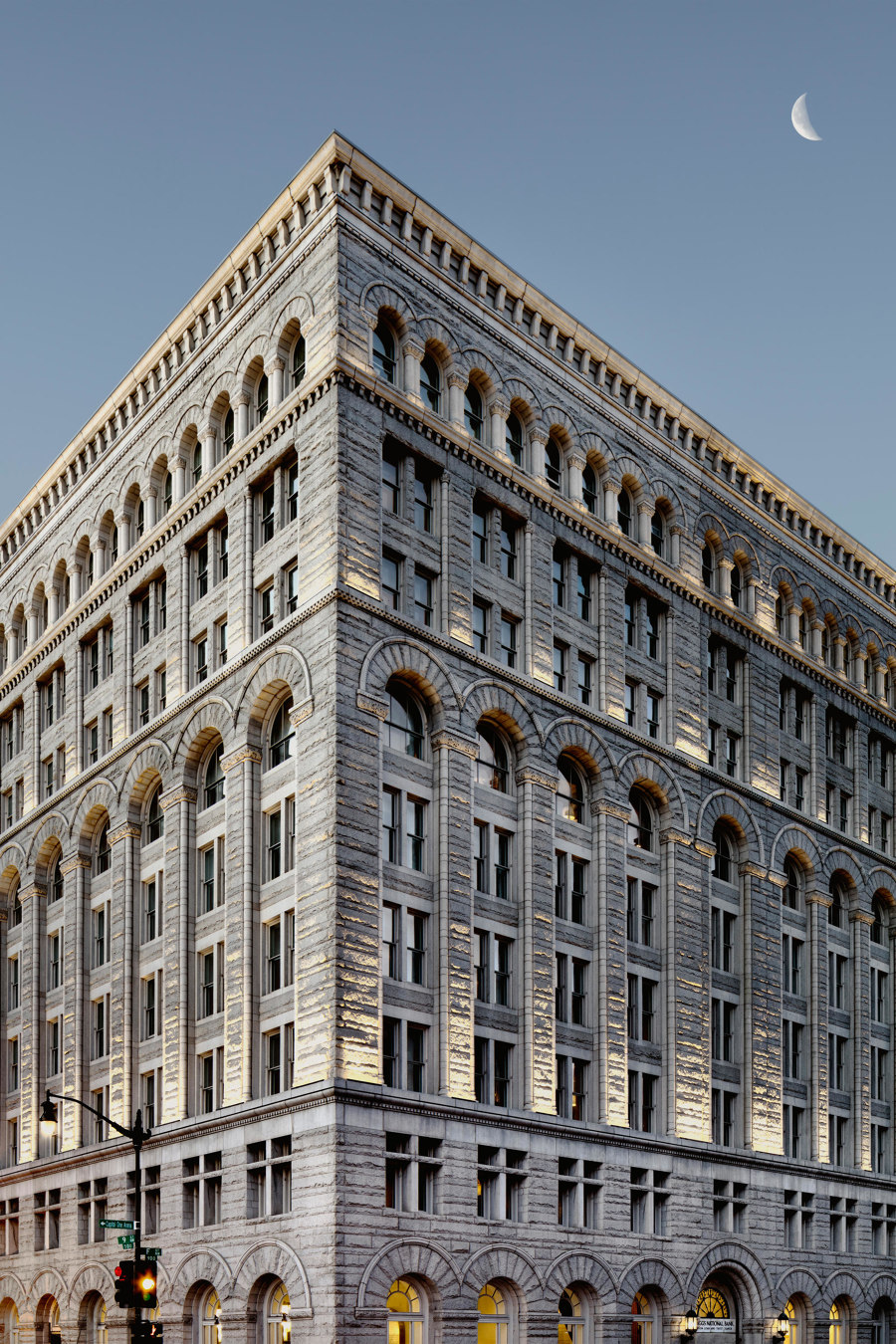Mr Goodbar: Jacu Strauss
Texte par Alun Lennon
22.04.20
Creative Director of hospitality company Lore Group Jacu Strauss’s latest project has taken him to Washington DC. We spoke to him about the role, how travel broadens the mind and the future of hospitality design.
Lore Group Creative Director Jacu Strauss at Cafe Riggs in Riggs Washington DC. Photo: Jennifer Hughes

Lore Group Creative Director Jacu Strauss at Cafe Riggs in Riggs Washington DC. Photo: Jennifer Hughes
×Jacu Strauss has been busy. The past number of years have seen the South African-born designer call various cities around the world home in his role as Creative Director at Lore Group – a company that designs, develops and operates hospitality concepts. The company’s latest project, The Riggs Washington DC, involved the transformation of the iconic Riggs National Bank into a hotel worthy of its historic site. He shares some of his thoughts with us.
Does working for a company like Lore Group mean embracing a role beyond that of just Creative Director? What are the insights and, conversely, the challenges of the position?
In general, our projects are contextual and that informs what we need to do. What makes my role different from just being a design consultant is that I need to know about all aspects of business, particularly with our hotels – Pulitzer Amsterdam, Sea Containers London, and most recently Riggs Washington DC. I need to make sure that the design works in sync with all other parts that make a project work, i.e. operations, durability, longevity. I will always fight the design corner but I know now what battles to fight and where to compromise in order to find that equilibrium.
Riggs Washington DC is a building with a long and rich history, having served previously as a bank to many of America’s most illustrious presidents. Was there an additional cultural responsibility or pressure on you when adapting the structure into a hospitality venue?
There was surprisingly little to no pressure. We were not the first to utilise a grand bank building as a hotel, nor, indeed, the first to repurpose this building as a hotel. Although, whereas in its prior incarnation, much of its history had been stripped from the building, we wanted to bring back the beauty and heritage of the building and its previous use as Riggs National Bank.
‘I need to make sure that the design works in sync with all other parts that make a project work – operations, durability, longevity’
We celebrated some of the many details we uncovered in the building from its past – interpreting some of the bank elements in a more abstract way and including some others to take the seriousness out of it. Our story also plays on the parallels between a hotel and a bank: ‘A public place for private affairs’. The response has been amazing – eliciting nostalgic and emotional memories for many guests and visitors.
You’ve spent time in many different places around the world. How strongly has this influenced you as a designer and to what degree are your projects influenced by their local context?
Travel opens one’s eyes (as cliché as that sounds!) and it is something that I’ve never regretted. Travel makes you less sentimental about what you think you know, and this liberates you to be less stubborn about new experiences. It encourages one to better understand the bigger picture. It’s not just about what’s happening between four walls. You can’t ignore what a building means to its neighbourhood or city.
‘Travel makes you less sentimental about what you think you know, and this liberates you to be less stubborn about new experiences’
Four years living in Amsterdam provided some of the inspiration for the Pulitzer Amsterdam – whether a painting in the Rijksmuseum, a detail on a house or a boat trip on the canals. The city’s rich history inspired an eclectic yet elegant look – original and historic features mixed with luxurious modern-day elements. Like the interior was left behind from different eras over the years.
How do you see hospitality design developing in the future? What trends do you see emerging?
There are many shifts. There has been a shift towards experience-driven options. Hotels are also again becoming part of communities, with restaurant and bar facilities ever more accessible to non-guests. Questions around sustainability are increasingly important of course. Design-wise, I’d like to see hospitality projects becoming less reliant on trends so as to avoid the need for redesigns every five years. Also, the disposable nature of things needs to change. Things should last – not just from a quality point of view but a hotel’s overall look and ambience should feel appropriate, so it becomes almost institutional.
In light of COVID-19, we anticipate more emphasis on hygiene and safety, and this will have a direct impact on design too. But more than ever before, there is such a wide variety of hotels that individual hotels can now be braver design-wise. Such diversity is very exciting and the sign of a very healthy hospitality market.
Photos: Jennifer Hughes
© Architonic








